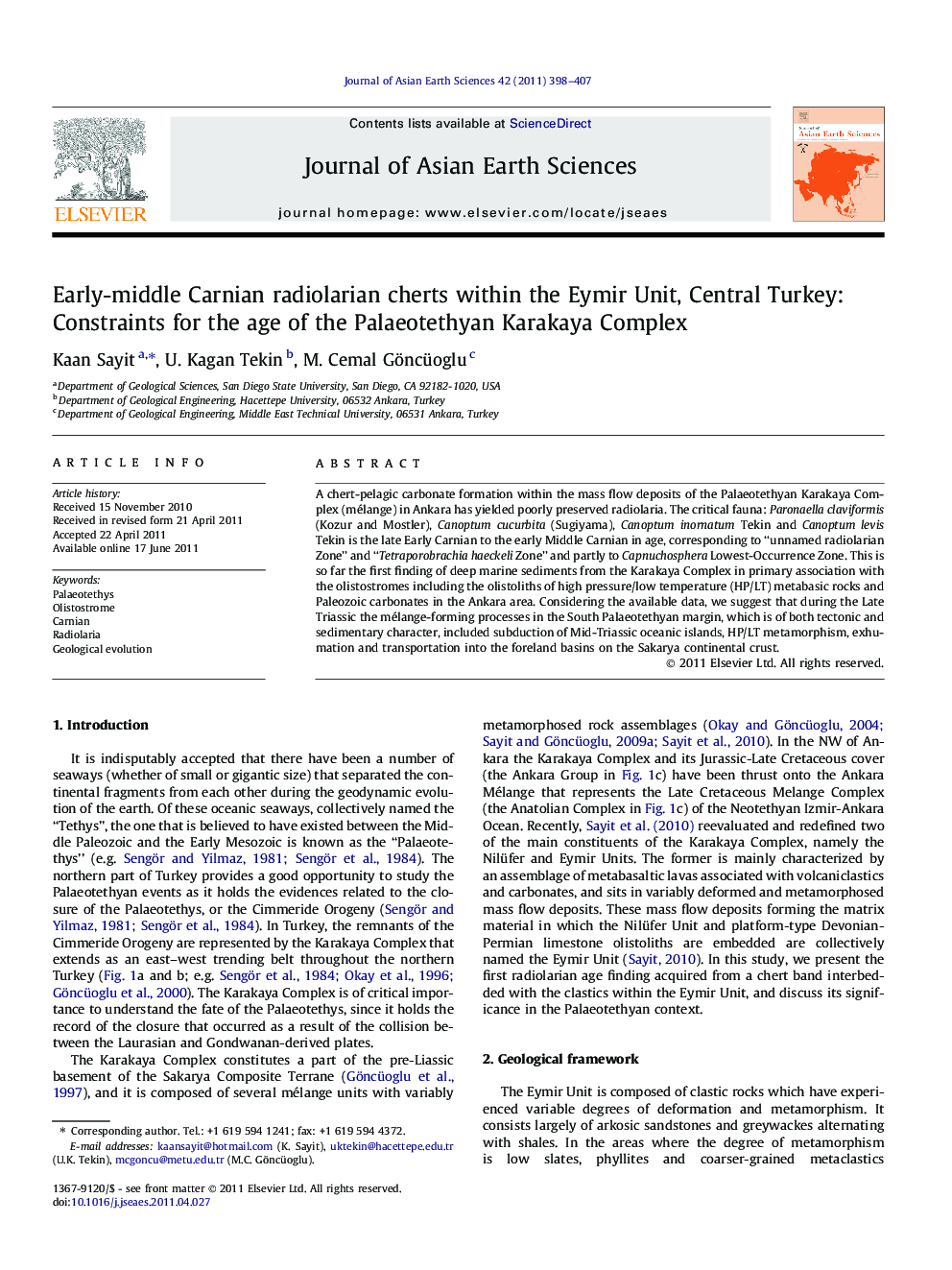| Article ID | Journal | Published Year | Pages | File Type |
|---|---|---|---|---|
| 4731863 | Journal of Asian Earth Sciences | 2011 | 10 Pages |
A chert-pelagic carbonate formation within the mass flow deposits of the Palaeotethyan Karakaya Complex (mélange) in Ankara has yielded poorly preserved radiolaria. The critical fauna: Paronaella claviformis (Kozur and Mostler), Canoptum cucurbita (Sugiyama), Canoptum inornatum Tekin and Canoptum levis Tekin is the late Early Carnian to the early Middle Carnian in age, corresponding to “unnamed radiolarian Zone” and “Tetraporobrachiahaeckeli Zone” and partly to Capnuchosphera Lowest-Occurrence Zone. This is so far the first finding of deep marine sediments from the Karakaya Complex in primary association with the olistostromes including the olistoliths of high pressure/low temperature (HP/LT) metabasic rocks and Paleozoic carbonates in the Ankara area. Considering the available data, we suggest that during the Late Triassic the mélange-forming processes in the South Palaeotethyan margin, which is of both tectonic and sedimentary character, included subduction of Mid-Triassic oceanic islands, HP/LT metamorphism, exhumation and transportation into the foreland basins on the Sakarya continental crust.
► The Eymir Unit is one of the melange units of the Paleotethyan Karakaya Complex. ► It acts as a matrix in which the OIB-type volcanics (Nilüfer Unit) are embedded. ► The new age data suggest that the melange formation lasted until Carnian. ► Both rift- and subduction-related events were involved in creating the Karakaya Complex.
